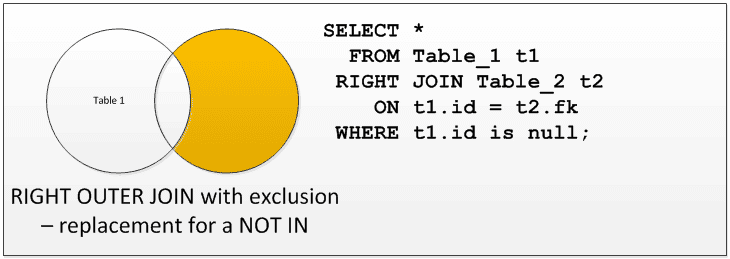Understanding the Anti Join in SQL: A Powerful Tool for Data Exclusion
In SQL, there are times when you need to identify rows in one table that do not have corresponding matches in another table. This is where the anti join becomes invaluable. An anti join is a query pattern used to retrieve data from one table while excluding rows that have matches in a second table. It’s a powerful technique for auditing, error checking, and identifying missing relationships in your data.
This article explains what an anti join is, how to implement it, common use cases, and why it’s an essential part of any SQL developer’s toolkit.
What Is an Anti Join?
An anti join is not a specific SQL keyword but a pattern achieved using standard SQL constructs like NOT EXISTS, NOT IN, or a left join with exclusion. Its purpose is to return rows from one table that do not have a match in another table based on a specified condition.

Example Scenario
Imagine you have two tables:
- Customers: A list of all registered customers.
- Orders: A list of all orders placed.
If you want to find customers who haven’t placed any orders, an anti join can provide the answer:
Using NOT EXISTS:
SELECT Customers.CustomerID, Customers.Name
FROM Customers
WHERE NOT EXISTS (
SELECT 1
FROM Orders
WHERE Customers.CustomerID = Orders.CustomerID
);
Using NOT IN:
SELECT Customers.CustomerID, Customers.Name
FROM Customers
WHERE Customers.CustomerID NOT IN (
SELECT CustomerID
FROM Orders
);
Using Left Join with Exclusion:
SELECT Customers.CustomerID, Customers.Name
FROM Customers
LEFT JOIN Orders ON Customers.CustomerID = Orders.CustomerID
WHERE Orders.OrderID IS NULL;
Common Use Cases for Anti Joins
1. Data Auditing
Identify missing relationships, such as:
- Employees without assignments.
- Products without suppliers.
- Orders without customer information.
2. Error Checking
Locate orphaned rows or incomplete data by finding entries in one table without corresponding data in related tables.
3. Exclusion Reports
Generate reports focused on missing or incomplete data. For example, listing students who have not registered for a class or customers who haven’t made purchases in a specific period.
Performance Considerations for Anti Joins
Anti joins, especially on large datasets, can be computationally expensive. To optimize performance:
- Index Join Columns: Index the columns used in the join condition to speed up lookups.
- Use NOT EXISTS Over NOT IN:
NOT EXISTSis generally more efficient and avoids issues with NULL values in subqueries. - Filter Early: Reduce the dataset size before applying the anti join by using WHERE clauses in both the main query and the subquery.
Anti Join Variations: Left and Right
The concept of the anti join applies equally to left joins and right joins, depending on which table you want to exclude data from.
- Left Join with Exclusion: Focuses on rows in the left table that have no matches in the right table.
- Right Join with Exclusion: Focuses on rows in the right table that have no matches in the left table.
Master Anti Joins and More at Stedman SQL School
The anti join is just one of many critical techniques covered in our JOIN Types Class at Stedman SQL School. Whether you’re auditing data, identifying errors, or creating exclusion reports, this class equips you with the skills to handle joins efficiently and effectively.
What You’ll Learn in the Class:
- The fundamentals of SQL joins, including inner, outer, cross, and anti joins.
- Practical use cases for anti joins using
NOT EXISTS,NOT IN, and left joins with exclusion. - Query optimization tips to improve performance with anti joins on large datasets.
Sign Up for the JOIN Types Class Today!

Take your SQL skills to the next level by mastering joins and exclusion techniques. Enroll in our JOIN Types Class now and gain the confidence to tackle even the most complex queries.
Questions? Reach out via our Stedman Solutions Contact Page.
Enhance your expertise with SQL Server and take control of your data with Stedman SQL School!
Getting Help from Steve and the Team
Contact us for your Free 30 minute consultation ORschedule your appointment now.